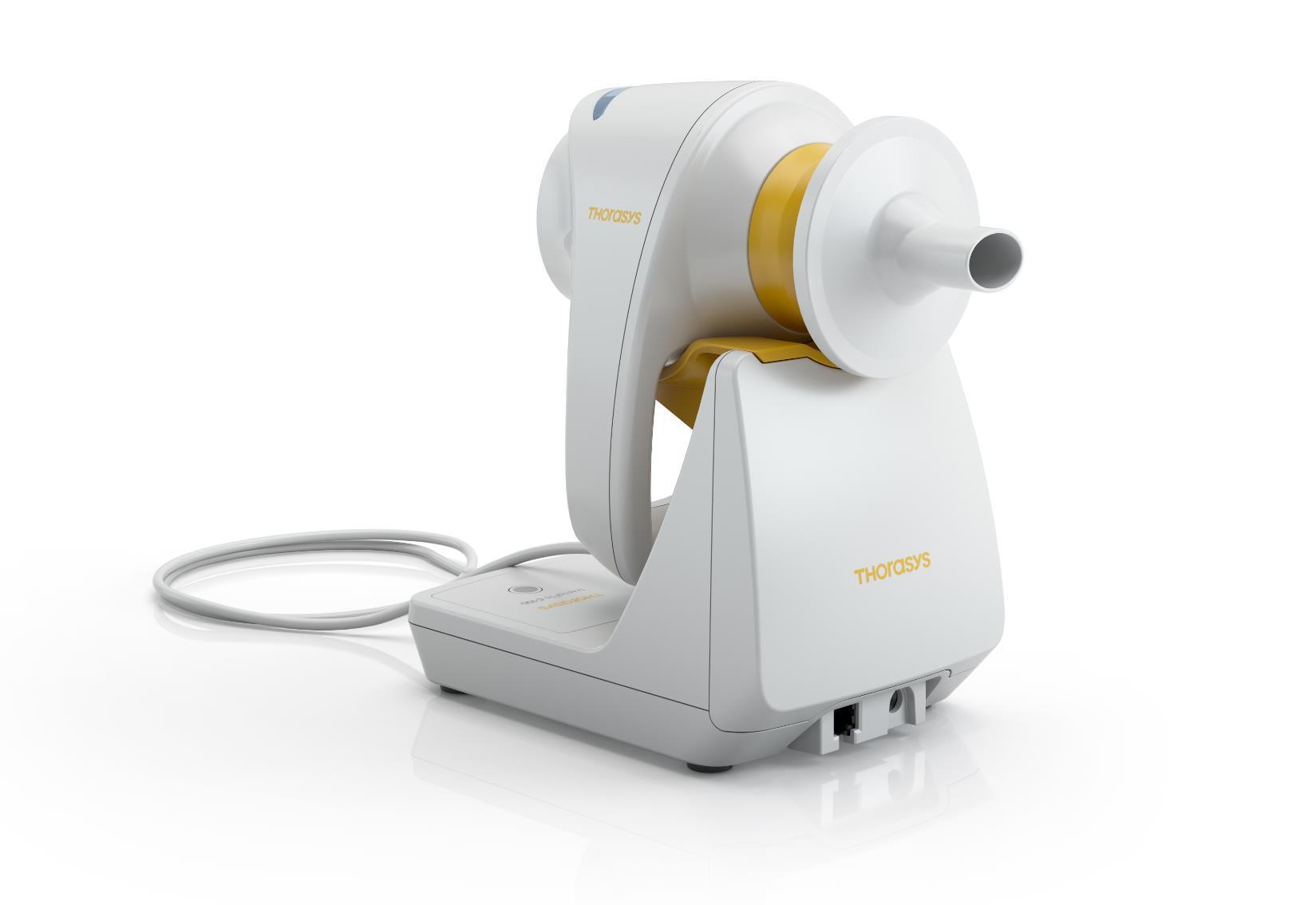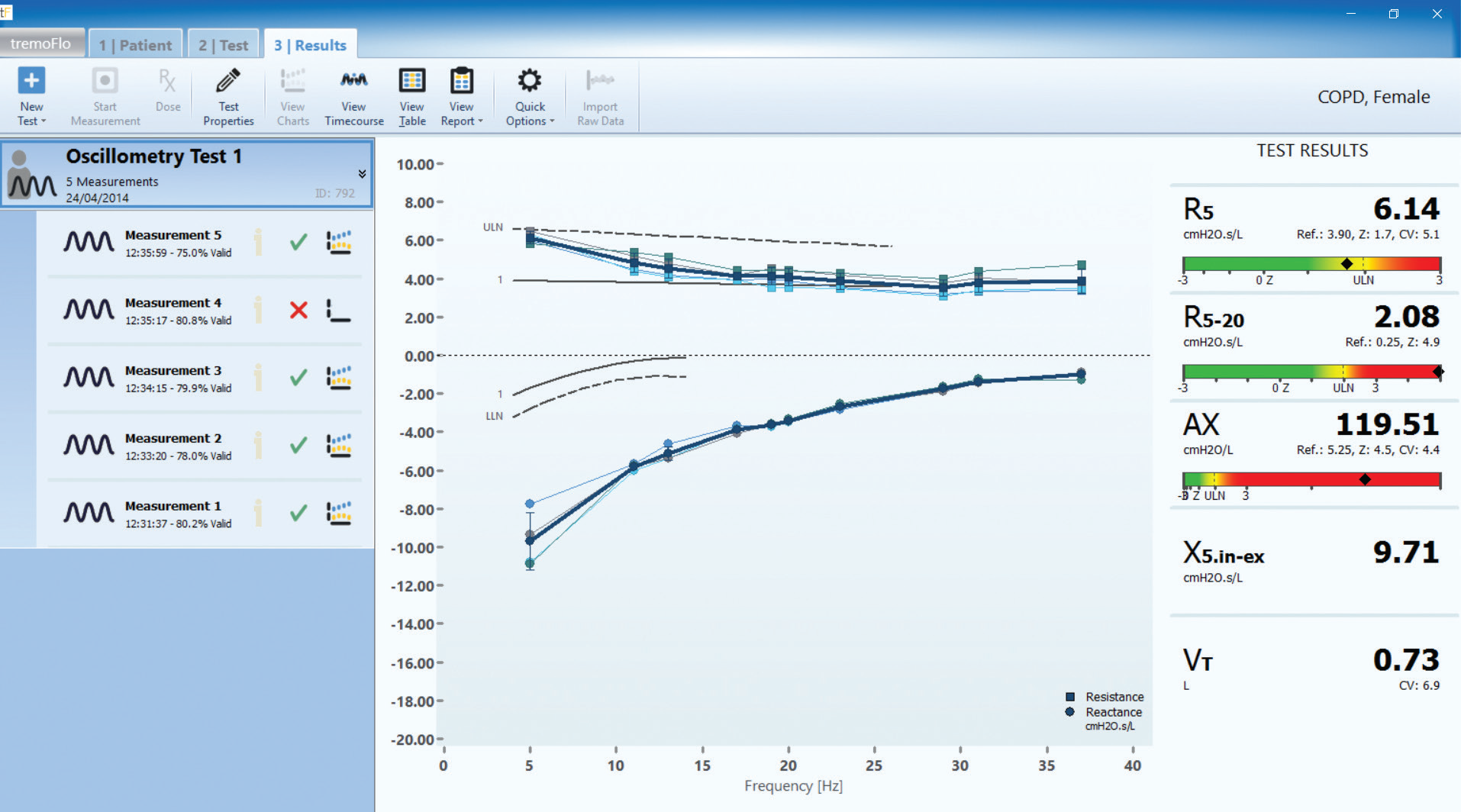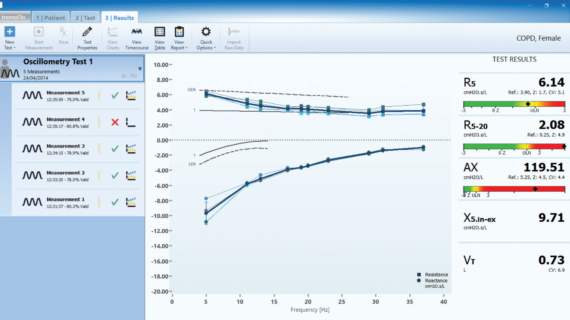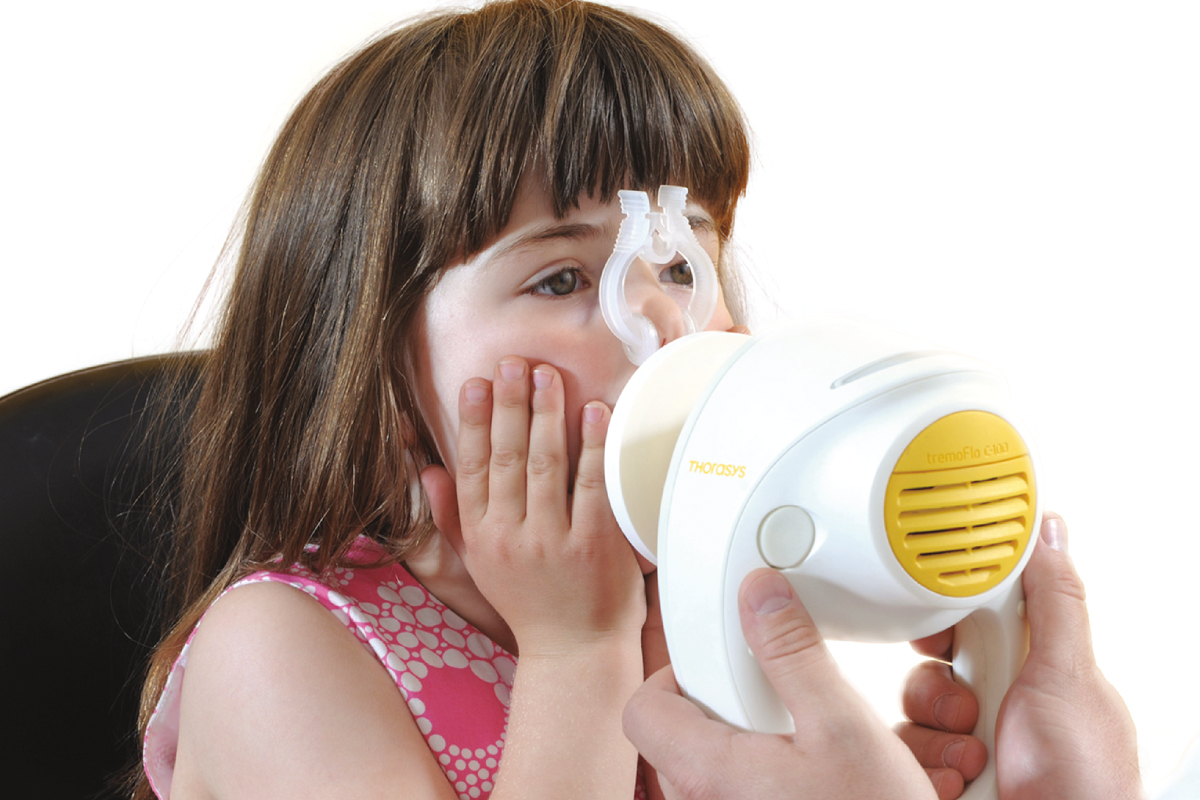FOT – Airwave Oscillometry
The forced oscillation technique (FOT) is a non-invasive method that aims to evaluate the respiratory system resistance and reactance during spontaneous ventilation. The method is based on the application of sinusoidal pressure variations in the opening of the airway through a mouthpiece during spontaneous ventilation.
Beyond Spirometry
Fast, Easy assessment of small Airway function
Oscillometry is “an in-office tool that can assess peripheral airway impairment even in young children and may detect airway obstruction earlier than spirometry.”
How does oscillometry compare with spirometry?
Airwave Oscillometry
Despite the wide acceptance of spirometry in clinical usage, there are a number of obstacles and shortcomings surrounding its use for patient assessment and diagnosis. Oscillometry, in contrast, assesses the patient’s pulmonary function during quiet, tidal breathing with no patient effort required, by superimposing a gentle, multi-frequency oscillation on top of the patient’s natural breathing.

The innovative tremoflo C-100 Airwave Oscillometry System (AOS) oers fast, easy assessment of large and small airway function. Measurements are obtained during tidal breathing and without patient eort.The tremoflo is excellently suited for a wide range of patients, from preschoolers to the elderly.
Outcomes
1 Respiratory Assessment made Fast and Easy
To assess respiratory function, the tremoflo adds a gentle oscillatory wave to the patient’s regular, quiet breathing. A measurement duration of only 20 seconds allows three repetitions within a couple of minutes, for a rapid and effective pulmonary function assessment.
2. Outcomes
The tremoflo provides curves of Resistance (R) and Reactance (X) as well as parameters reflecting the large and small airway function. In fact, Tremoflo provide an indication of pressure and obstruction of flow in both the upper and lower airway

3. Central Airway Obstruction
An obstruction of the large, central airways causes a parallel upward shift in R while X remains largely unchanged.
4. Peripheral Airway Obstruction
Obstruction of the small airways in the peripheral lung causes a downward shift in X along with an increase in R. In presence of heterogeneities, R also becomes curved.

5. Dynamic Collapse
Dynamic collapse and expiratory flow limitation cause dramatic changes in X, especially during expiration.

tremoflo C-100 Airwave Oscillometry System (AOS)
| Measurement Principle | Oscillometry (Forced Oscillation Technique, FOT) |
| Oscillator Technology | Breathe-through Vibrating Mesh (Patented) |
| Measurement Modes | AOS: Pseudo-random noise |
| Measurement Duration | 20 sec (typ.), user adjustable
3 repetitions (as per guideline |
| Patient Interface | Bacterial/viral filter with integrated mouthpiece |
| Dimensions & Weight
|
7.5 x 5.1 x 5.5 in, 1.5 lb (handheld only)
8.3 x 5.5 x 9.4 in, 3.7 lb (handheld & cradle) |
| Performance | Meets and exceeds ERJ 2003, 22: 1026-1041 |
| Marks & Licenses | Health Canada, CE Mark, ARTG |
tremoflo Benefits
- Tidal Breathing
- No forced expiration.
- Fast & Easy
- Test in a few min.
- Respiratory Mechanics
- Info related to small airways. 3
- Pre/Post testing
- Automated Workflows.
- Compact & Portable
- Weighs only 700 g.
- Easy Daily Calibration
- Less than 30sec.
- Adult & Pediatric
- Normative values provided
- Intra-Breath Analysis
- Insp/Expiratory analysis.
Actual tremoflo Data
A simple green-to-red gauge scale clearly shows whether patients
fall within or outside normative values that are available for
pediatrics and adults.

Pre/Post Test ,Asthma Patient

COPD
- Date: July 15, 2020
- Category: FOT(Airwave Oscillometry), Impulse Oscillometry, IOS, Pulmonary Equipments









